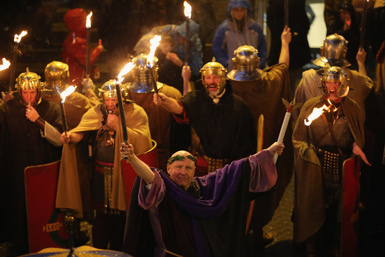Historical news. The festive time of year is upon us, once again. People are frantically shopping for all of the paraphernalia that goes along with this time of year; trees, decorations, gifts, food, alcohol and those special outfits for the numerous Christmas parties that usher in the week long celebrations. Television adverts began heavy promotional tactics over a month ago aimed at parents, selling the idea of the “must have” present this year, while children are held to ransom with the warning that if they misbehave they will not receive a gift from Father Christmas.
Today, Christmas is celebrated by over 400 million people world wide. Each country has its own slightly different variation and customs, however, Christmas is the biggest birth ritual celebration celebrated at this time of year in Christendom. But what are the origins of Christmas and what are some of the customs and rituals that mark this time of year?
The name ‘Christmas’ comes from the 11th century English word Cristesmaesse, meaning Mass of Christ and was endorsed by the Roman Catholic religion as the designated birth day of Jesus Christ, even though most historians place the birth of Christ as the month of October. They conclude that when the birth of Christ was announced the shepherds were keeping watch over their flock in the fields. If it were in December, which is in the wintertime, they would not have been outside, as the weather in Palestine during the winter months is wet and temperatures can drop to below freezing. Interestingly, there is no mention of a date for the birth of Christ in any Bible translation. The date December 25th was chosen when the Roman Catholic Church wanted people to embrace Christianity.

The Romans observed Saturnalia beginning December 17. Image by Christopher Furlong/Getty News/Getty Images
The Romans already celebrated the pagan festival of Saturnalia (held on 17th December) in which they honoured their god of the harvest, Saturn. The Saturnalia was characterised by extravagant feasts, merrymaking, visiting friends and the giving of small gifts on the 23rd December. Part of the tradition of the Saturnalia was to decorate the home with candles and to have, greenery and wreaths hanging over doorways. Thus, to make it easier for people to embrace Christianity, the Saturnalia was made into a Christian festival. Food, feasting, drunkenness and merry making were all part of the traditional Saturnalia, as were cakes made in a variety of shapes.
The most common shapes were fertility symbols representing the sun, moon and stars. Gold was always a popular colour for the Saturnalia celebrations because it was a reminder of the sun which was also worshipped. Another aspect of the Saturnalia was characterised by moral abandonment, likewise today most clinicians are inundated for advice about unwanted pregnancies and sexual infections in the first three months following Christmas and the New Year.



